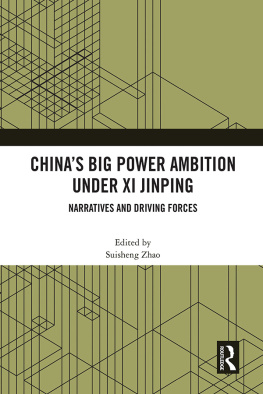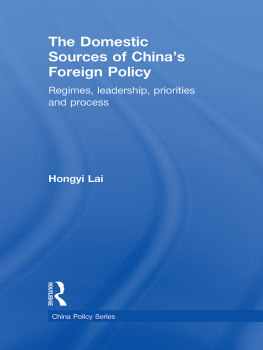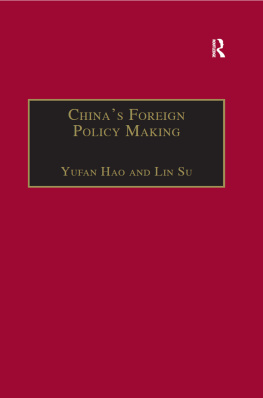Suisheng Zhao - The Dragon Roars Back: Transformational Leaders and Dynamics of Chinese Foreign Policy
Here you can read online Suisheng Zhao - The Dragon Roars Back: Transformational Leaders and Dynamics of Chinese Foreign Policy full text of the book (entire story) in english for free. Download pdf and epub, get meaning, cover and reviews about this ebook. City: Stanford, year: 2022, publisher: Stanford University Press, genre: Science / Politics. Description of the work, (preface) as well as reviews are available. Best literature library LitArk.com created for fans of good reading and offers a wide selection of genres:
Romance novel
Science fiction
Adventure
Detective
Science
History
Home and family
Prose
Art
Politics
Computer
Non-fiction
Religion
Business
Children
Humor
Choose a favorite category and find really read worthwhile books. Enjoy immersion in the world of imagination, feel the emotions of the characters or learn something new for yourself, make an fascinating discovery.
- Book:The Dragon Roars Back: Transformational Leaders and Dynamics of Chinese Foreign Policy
- Author:
- Publisher:Stanford University Press
- Genre:
- Year:2022
- City:Stanford
- Rating:4 / 5
- Favourites:Add to favourites
- Your mark:
The Dragon Roars Back: Transformational Leaders and Dynamics of Chinese Foreign Policy: summary, description and annotation
We offer to read an annotation, description, summary or preface (depends on what the author of the book "The Dragon Roars Back: Transformational Leaders and Dynamics of Chinese Foreign Policy" wrote himself). If you haven't found the necessary information about the book — write in the comments, we will try to find it.
China is unique in modern world history. No other rising power has experienced Chinas turbulent history in its relations with neighbors and Western countries. Its sheer size dominates the region. With leader Xi Jinpings political authority unmatched, Xis sense of mission to restore what he believes is Chinas natural position as a great power drives the current course of the nations foreign policy. When China was weak, it was subordinated to others. Now, China is strong, and it wants others to subordinate, at least on the issues involving what it regards as core national interests.
What are the primary forces and how have these forces driven Chinas reemergence to global power? This book weaves together complex events, processes, and players to provide a historically in-depth, conceptually comprehensive, and up-to-date analysis of Chinese foreign policy transition since the founding of the Peoples Republic of China (PRC), arguing that transformational leaders with new visions and political wisdom to make their visions prevail are the game changers. Mao Zedong, Deng Xiaoping, and Xi Jinping are transformational leaders who have charted unique courses of Chinese foreign policy in the quest for security, prosperity, and power. With the ultimate decision-making authority on national security and strategic policies, these leaders have made political use of ideational forces, tailoring bureaucratic institutions, exploiting the international power distribution, and responding strategically to the international norms and rules to advance their foreign policy agendas in the path of Chinas ascendance.
Suisheng Zhao: author's other books
Who wrote The Dragon Roars Back: Transformational Leaders and Dynamics of Chinese Foreign Policy? Find out the surname, the name of the author of the book and a list of all author's works by series.












